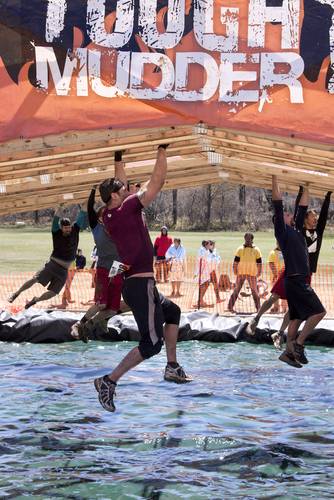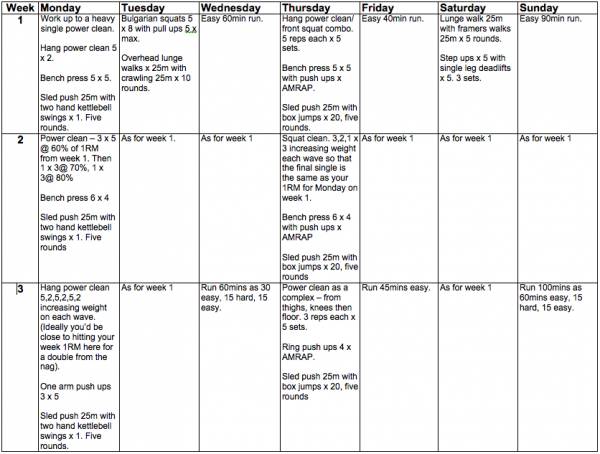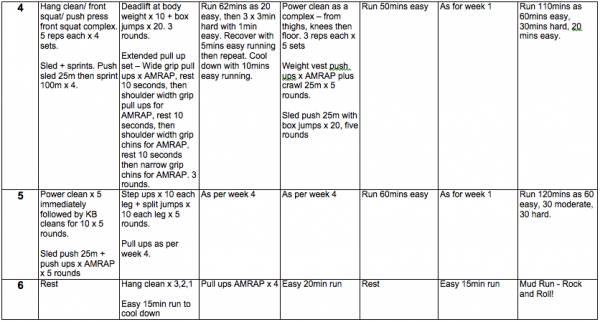Obstacle racing is the new boot camp. Going back a few years boot camps were all the rage. You’d have a bunch of pretend tough guys (in most cases, although some were legit ex-military PTIs) parading around in camouflage or other tactical gear, and barking orders at people desperate to get in shape. The reason boot camps were so popular came down to two things:
Obstacle racing is the new boot camp. Going back a few years boot camps were all the rage. You’d have a bunch of pretend tough guys (in most cases, although some were legit ex-military PTIs) parading around in camouflage or other tactical gear, and barking orders at people desperate to get in shape. The reason boot camps were so popular came down to two things:
- It gave people a taste of what it is like in the military.
- Training in a group helps people stay committed as not only do they enjoy the workouts but there is peer pressure at work to keep people coming back even when they don’t feel like it.
And those are two of the big draws for obstacle racing, too. You can do it as a team challenge with events like Tough Mudder or choose to do individual races like Spartan Race, but in both cases you will be amongst large groups of people and you will get to run through various obstacles (although I must be honest and say in all the times I ran various obstacle courses in the military I never once had to run through a bunch of electrified wires).
But how do you train for one of these things if you don’t have a ten-foot wall to climb or a bunch of pipes to crawl through? I’m going to assume that if you have decided to sign up for a mud run that you can at least run. If you’re not a runner at this point then please look at my running break-in plan. On top of that we’re also going to add some strength work.
The twist to the strength work is that we can’t allow ourselves to be dogmatic about how we train. The thing about events like an obstacle course race is that there is no way you can actually train for them short of being on the course. They’re incredibly non-specific, so our training needs to be broader based than usual. This doesn’t mean we need to go crazy and start trying to cram everything plus the kitchen sink into our sessions, but where I would normally suggest picking a few exercises and getting very good at them, for events like this we need to deliberately expand our training selections.
What do I mean? Here are the elements you should include:
Power Cleans
The power clean is a long time favorite exercise of mine. It gives me a lot of benefits for a single movement and allows me to use a lot of weight. But for events like this we’ll be better off not just using power cleans but using every variation we can come up with. So it might be power cleans, hang power cleans from various positions, full cleans, and all forms of clean pulls from both the floor and the hang.
 Grip Strength
Grip Strength
I’m also a firm believer that grip strength and the ability to pull yourself up are important for climbing walls, ropes, and the other odd shaped obstacles that need to be navigated. So we’ll need pull-ups too, but we need a wide variety of them.
Single Leg Training
Since spending a lot of time running getting ready for an Ironman, I’ve fallen in love again with single leg training. You get big strength increases and improvements in your movement (which can actually be assessed via the FMS), but miss out on a lot of the spinal compression you get from bilateral leg training. But again, we need a wide variety to satisfy this element of the unknown that we will encounter during the mud run.
Circuit Training
We also need to incorporate elements of circuit training into our own training so that we get used to accessing our strength under stress. This kind of power endurance work is often used by people in the mistaken belief that it is all they need, but you still need to include straight high-load strength work in your training up until about a week out.
I’ve put together a six-week training plan that will prepare you for an obstacle course. To get it in printable form, you can download a PDF here.


Download a printable PDF of this 6-week training plan.
Photos courtesy of Shutterstock.






